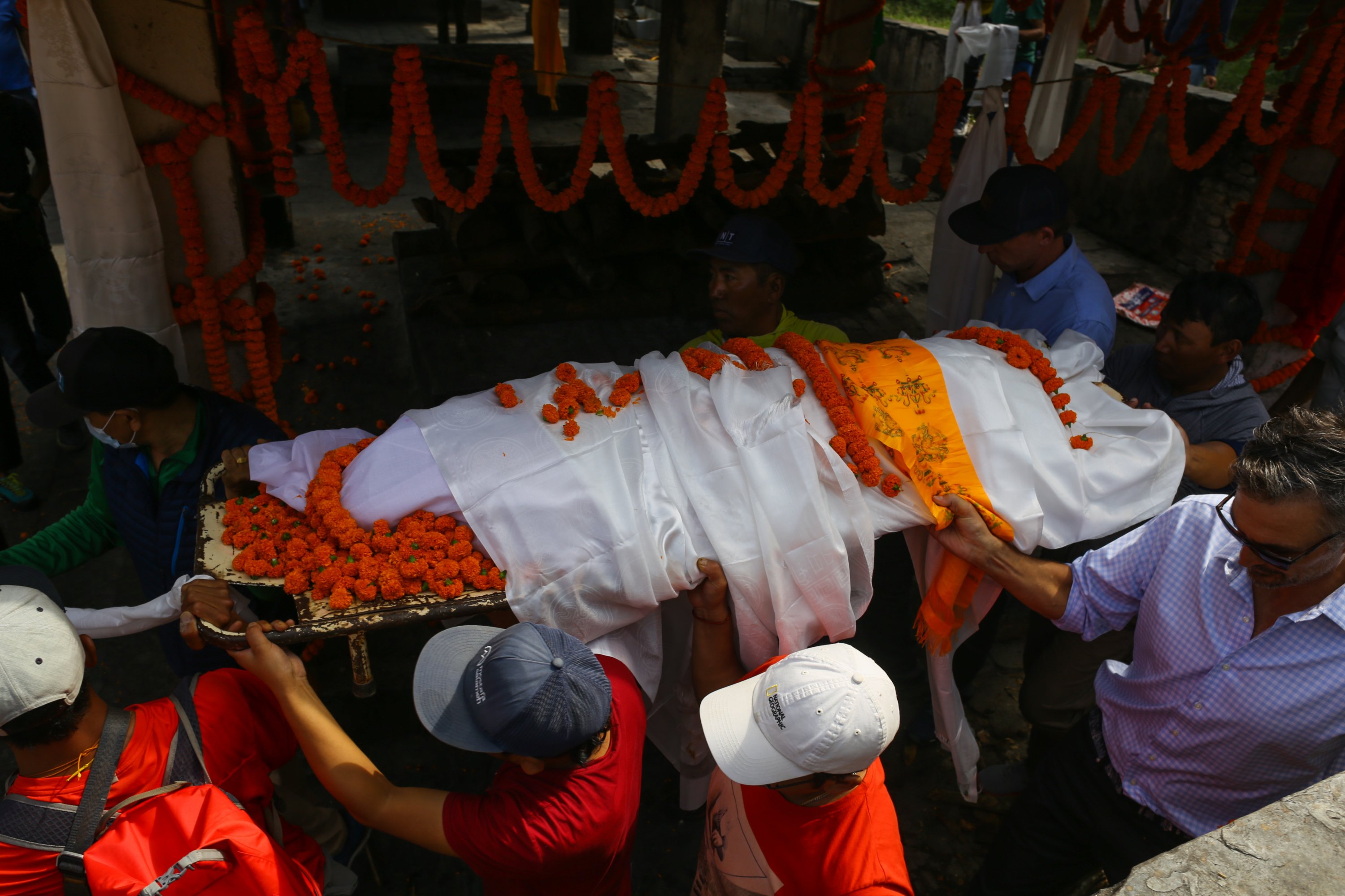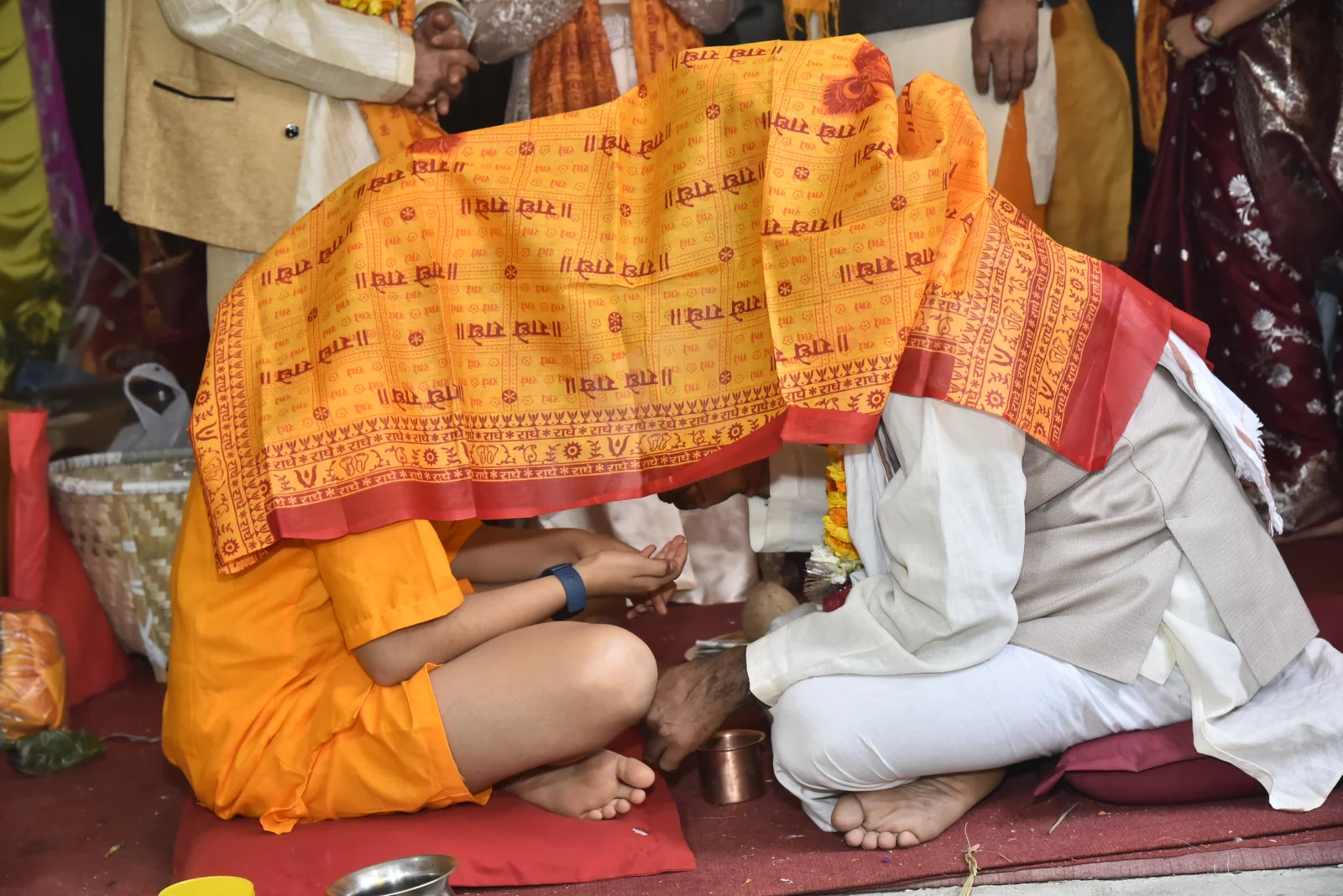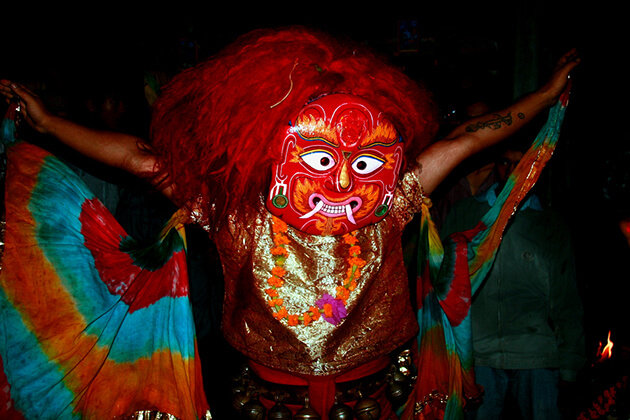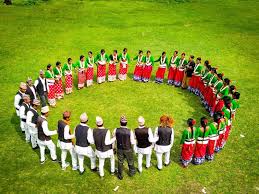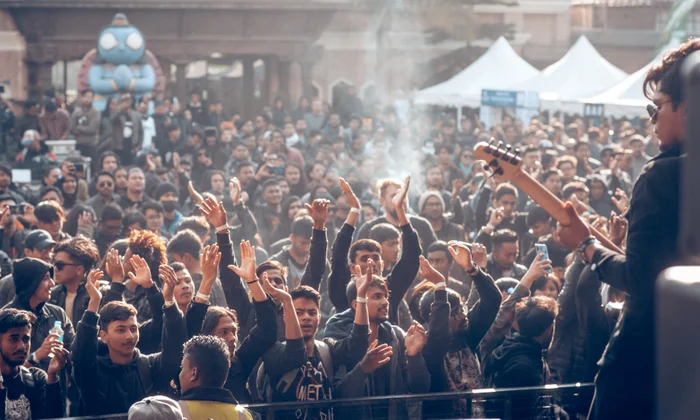Share this Article
Introduction: The Heartbeat of Nepal’s Countryside
Nepal, a land of breathtaking mountains, lush valleys, and vibrant communities, carries within its rural landscapes a treasure that transcends geography and time: its folk music and dance. These cultural expressions are not mere entertainment; they are the living heartbeat of Nepali villages, resonating with the rhythms of daily life, seasons, festivals, and human emotions. From the highlands of Mustang to the Terai plains, each region boasts unique melodies and movements that tell stories of love, labor, joy, sorrow, and devotion. Understanding Nepali folk music and dance is to understand the soul of Nepal itself—a nation where tradition and communal identity thrive through song and movement.
The origins of these folk traditions are deeply intertwined with Nepal’s history. Long before the advent of modern musical instruments and contemporary performing arts, villagers crafted their own sounds using indigenous instruments like the madal, sarangi, tungna, and bansuri. Likewise, dance emerged as a natural extension of human celebration and ritual, performed in courtyards, fields, and during communal gatherings. These performances served multiple purposes: marking agricultural milestones, celebrating festivals, narrating historical tales, and preserving spiritual and ethical teachings. Today, despite urbanization and globalization, Nepali folk music and dance continue to serve as a vibrant cultural repository, connecting present generations with their ancestral roots.
Regional Diversity and Musical Identity
Nepal’s diverse geography has fostered a rich variety of folk traditions, each with distinct musical structures, instruments, and dance forms. In the hilly and mountainous regions, songs often revolve around pastoral life, nature, and local legends. Instruments like the sarangi—a bowed string instrument—accompany ballads that narrate heroic deeds, seasonal changes, or unfulfilled love. The hill dances, such as the Maruni and Dhan Nach, combine intricate footwork with rhythmic clapping, creating a mesmerizing interplay between melody and movement. These performances are communal, with villagers participating both as performers and audience, reinforcing social bonds.
In contrast, the Terai region, influenced by its proximity to India, has folk traditions that emphasize rhythmic percussion and vocal improvisation. Tharu music, for instance, employs the dholak and jhyamta to accompany dances that mimic the movements of daily life, hunting, or agricultural work. These dances are often performed during festivals like Maghi or Holi, bringing communities together in celebration and cultural pride. The Terai folk songs frequently explore themes of love, fertility, and local mythology, blending oral storytelling with melodic innovation, ensuring that the community’s collective memory is passed from one generation to the next.
Instruments as Voices of Tradition
The instruments of Nepali folk music are as diverse as the country’s geography. Each instrument carries a unique timbre that reflects the cultural nuances of its region. The madal, a double-headed drum, is ubiquitous across the hills, providing the rhythmic backbone to almost every folk performance. Its beats evoke the cadence of daily life, from plowing the fields to celebrating weddings. The sarangi, with its haunting tones, often accompanies emotional or spiritual songs, conveying feelings that words alone cannot express. In the Terai, instruments like the bansuri (flute) and dholak allow for dynamic interplay between rhythm and melody, shaping the tempo and energy of dances that often involve large groups of participants.
Beyond mere entertainment, these instruments also serve ritualistic and ceremonial purposes. For example, during festivals dedicated to local deities, the playing of specific instruments at precise moments is believed to invoke blessings or ward off negative spirits. This intertwining of music with spiritual and communal life underscores the deep reverence Nepalese people hold for their folk traditions. Even today, while electronic instruments and recordings have entered rural households, the traditional instruments maintain a symbolic significance, representing continuity and cultural identity.
Dance as a Reflection of Social Life
Nepali folk dance is far more than an art form; it is a mirror of social structure, community values, and daily life. Each movement, gesture, and formation carries symbolic meaning, often narrating stories of agricultural labor, family bonds, or historical events. In rural Nepal, dance is rarely performed in isolation—it is a communal act that reinforces identity, fosters cooperation, and celebrates shared heritage. For instance, the Maruni dance of the eastern hills involves both men and women performing in synchrony, with intricate footwork and swirling skirts reflecting the cyclical patterns of agricultural life. The performance is accompanied by songs that recount folklore, moral lessons, or humorous tales, blending entertainment with education.
In the western hills, the Deuda dance highlights the collective spirit of community life. Villagers form large circles, holding hands while moving in coordinated steps to the rhythm of traditional songs. The lyrics often address social issues, heroic exploits, or seasonal changes, serving as a medium for oral storytelling that transcends generations. Similarly, the Terai region’s Jhyaure and Domkach dances involve playful interactions between men and women, often reflecting courtship rituals or agricultural festivities. These dances are more than performance; they are a living repository of societal norms, ethical values, and local history.
Dance in Nepal also serves spiritual and ceremonial purposes. During festivals like Dashain, Tihar, and Maghe Sankranti, dance becomes an offering to deities, a communal prayer, and a ritualistic celebration of life’s cycles. Villagers perform in open courtyards, temples, or forested areas, creating a powerful synergy between human expression and natural surroundings. Even modern adaptations of these dances maintain their traditional essence, highlighting the adaptability of Nepali folk culture to contemporary contexts while preserving its original significance.
Folk Music in Daily Life and Rituals
Nepali folk music is not confined to stage performances or festivals; it permeates everyday life in rural communities. Songs accompany agricultural tasks, such as planting, harvesting, or herding, providing rhythm and morale to laborious work. These work songs, often improvised, reflect the experiences, struggles, and humor of ordinary villagers. For instance, while planting rice in the Terai paddies, women often sing "Hori" songs, which blend playful banter with subtle commentary on village life, thereby fostering camaraderie and collective effort.
Music also plays a central role in life-cycle rituals—from birth to marriage and death. During weddings, vibrant songs celebrate love, familial bonds, and community cohesion, while traditional lullabies, passed down through generations, soothe infants and teach moral lessons. Funeral songs, conversely, convey grief and remembrance, offering communal solace through melody. These musical practices demonstrate that folk music in Nepal is not merely a form of entertainment; it is a vital social instrument that strengthens communal ties, preserves cultural memory, and imparts ethical teachings.
Festivals and Seasonal Celebrations
In Nepal, festivals are not only religious or social events but also vibrant showcases of folk music and dance. The rhythms, melodies, and choreographies performed during these occasions reflect the agricultural calendar, local mythology, and communal identity. Each festival brings with it specific songs and dances, often rooted in centuries-old traditions that link the present with the past. These performances are communal expressions of joy, devotion, and cultural continuity, making them central to the social fabric of rural Nepal.
One of the most widely celebrated festivals is Dashain, a time when villages come alive with music, dance, and ritual. Folk songs accompany the planting of ceremonial crops, processions to temples, and communal feasting. Dances performed during Dashain often depict episodes from the Mahabharata and Ramayana, blending storytelling with physical expression. In the Terai region, the Chhath festival, dedicated to the sun god, involves songs and dances performed at riverbanks and ponds. Devotees sing praises, recount local legends, and move rhythmically in rituals that honor the sun’s life-giving energy, reinforcing both spiritual devotion and community cohesion.
Seasonal celebrations also dictate the thematic content of folk music. During the monsoon, songs and dances express gratitude for rainfall and the fertility of the land, while in the harvest season, performances celebrate abundance and communal labor. For instance, the Maghi festival of the Tharu community features songs and dances that mark the end of winter and the beginning of a new agricultural cycle. Participants wear traditional attire, play indigenous instruments, and perform choreographed steps that mimic natural elements like rain, wind, and crop growth.
Beyond agricultural and religious festivals, folk music and dance are integral to regional fairs, weddings, and communal gatherings. These occasions provide opportunities for villagers to showcase their artistic talents, reinforce social ties, and transmit knowledge to younger generations. By linking the rhythms of life with music and movement, these celebrations serve as living archives of Nepali culture, ensuring that folk traditions remain relevant, dynamic, and deeply embedded in everyday life.
Preservation, Challenges, and Modern Influence
Despite their deep roots in Nepali culture, folk music and dance face numerous challenges in the modern era. Urbanization, migration, and the influence of global media have changed lifestyles and priorities, often sidelining traditional practices. Young people, attracted to contemporary music and dance forms, sometimes perceive folk traditions as outdated or less appealing. As a result, many rural performances are at risk of fading, particularly in regions where migration has depleted village populations. Additionally, the commercialization of music and dance has altered original practices, leading to simplified or staged versions that may prioritize entertainment over cultural authenticity.
However, efforts to preserve these traditions have intensified in recent decades. Local communities, cultural organizations, and government initiatives have emphasized documentation, education, and performance opportunities. Schools in rural areas incorporate folk music and dance into their curricula, teaching children songs, instrument techniques, and dance steps that might otherwise be lost. Cultural festivals and competitions provide platforms for rural artists to perform, share knowledge, and engage with wider audiences. Organizations like the Nepal Folk Arts Museum and various regional trusts play a pivotal role in archiving folk songs, musical instruments, and traditional attire, ensuring that knowledge is preserved for future generations.
Modern influence has also fostered creative adaptations. Contemporary Nepali musicians and dance troupes often blend traditional elements with modern instrumentation, recording techniques, or choreography, making folk culture more accessible to urban audiences and international listeners. For example, fusion performances that combine the madal or sarangi with electronic instruments have gained popularity on radio, streaming platforms, and social media, bridging the gap between tradition and innovation. These adaptations, while sometimes criticized for diluting authenticity, demonstrate the resilience and flexibility of Nepali folk culture.
Moreover, technology has enabled the preservation and dissemination of folk traditions on an unprecedented scale. Audio recordings, video documentation, and online platforms allow remote communities and diaspora populations to connect with their cultural heritage. Folk festivals are now live-streamed, workshops are conducted online, and digital archives make rare performances available to researchers, students, and enthusiasts worldwide. These efforts ensure that Nepali folk music and dance not only survive but evolve, maintaining relevance in a rapidly changing world.
Folk Music and Dance as Cultural Identity
Nepali folk music and dance are more than entertainment; they are essential expressions of cultural identity. In rural communities, participation in music and dance affirms belonging, strengthens social bonds, and communicates shared values. Through generations, these practices have shaped community life, reflecting local histories, spiritual beliefs, and social norms. Each melody, rhythm, and movement conveys a story that situates villagers within a broader cultural landscape, creating a sense of pride and continuity.
For many ethnic groups in Nepal, folk traditions serve as markers of identity. The Newar community of the Kathmandu Valley, for instance, maintains intricate dances and music linked to religious rituals and festivals, distinguishing their cultural heritage from surrounding groups. In the Terai, Tharu folk music and dance not only narrate historical and mythological stories but also affirm community solidarity and connection to ancestral lands. Such practices act as living symbols, reminding communities of their distinct heritage while contributing to Nepal’s overall cultural mosaic.
The Nepali diaspora has also embraced folk music and dance as a means of preserving identity abroad. Nepali communities in India, Bhutan, the Middle East, Europe, and North America frequently organize cultural events where folk songs and dances are performed. These events allow expatriates to celebrate their heritage, pass traditions to younger generations, and introduce Nepali culture to broader audiences. In this context, folk music and dance function as cultural ambassadors, representing Nepal’s diversity, resilience, and creativity on a global stage.
Furthermore, folk music and dance foster intercultural dialogue within Nepal itself. Festivals that bring together multiple ethnic groups encourage sharing of songs, instruments, and choreographies, promoting mutual understanding and unity. This cultural interplay strengthens national identity while highlighting the unique contributions of each community. Through these expressions, Nepali folk traditions continue to serve as a vibrant, living testament to the country’s rich cultural diversity and collective memory.
Education, Transmission, and the Role of Oral Tradition
The survival of Nepali folk music and dance relies heavily on education and the oral transmission of knowledge. In rural communities, children learn by observing elders, participating in communal performances, and practicing songs and movements during festivals, work, and daily life. This informal method of learning ensures that skills, stories, and cultural values are transmitted organically from one generation to the next. Unlike formal education, which often prioritizes literacy and standardized curricula, the oral tradition emphasizes memory, improvisation, and communal participation, making the learning process immersive and deeply connected to lived experience.
Instruments, melodies, and dance steps are taught through repetition, imitation, and guidance from experienced performers. For example, a young musician may accompany a madal player during fieldwork or practice the sarangi under the supervision of a local expert, gradually mastering technique and expression. Similarly, children participate in circle dances or group choreographies, internalizing rhythms and steps while absorbing the stories embedded in songs. This hands-on, participatory approach ensures that cultural nuances, local dialects, and subtle gestures are preserved, aspects that written notation or recordings alone cannot fully capture.
Formal education and institutional support are increasingly supplementing traditional methods. Schools, cultural centers, and non-governmental organizations conduct workshops, classes, and competitions that teach folk music and dance systematically. These programs often provide opportunities for younger generations to engage with their heritage even in urban settings, preventing cultural erosion caused by modernization and migration. Documentation efforts, including recordings, transcriptions, and digital archiving, further support preservation, allowing both students and researchers to access rare performances and study regional variations.
The role of oral tradition also extends to the communal reinforcement of social values and historical memory. Songs often convey lessons about morality, cooperation, and resilience, while dances depict historical events, legends, and seasonal cycles. This educational function highlights the multidimensional importance of Nepali folk music and dance: they entertain, instruct, unite, and preserve collective memory. By combining oral transmission with modern educational initiatives, communities ensure that these traditions remain vibrant, adaptable, and relevant for future generations.
Gender Roles and Participation in Folk Traditions
Gender plays a significant role in the performance and preservation of Nepali folk music and dance. In many rural communities, men and women have distinct roles in both musical and dance traditions, shaped by social norms, cultural practices, and historical customs. Yet, despite these distinctions, folk traditions often provide spaces where both genders contribute meaningfully to communal expression, ensuring the continuity of cultural practices.
Instruments and singing are frequently gendered. For instance, men commonly play the madal, dholak, or other percussion instruments, providing the rhythmic foundation for songs and dances. Women, on the other hand, often lead vocal performances, particularly in work songs, lullabies, and devotional pieces. During festivals and ritual ceremonies, female singers may narrate stories, offer prayers, or sing playful songs that involve improvisation and interaction with male participants. These collaborative dynamics create a balanced cultural ecosystem in which both men and women express creativity and sustain traditions.
Dance roles are similarly differentiated but complementary. In dances such as the Maruni or Deuda, women often perform graceful, flowing movements that emphasize elegance and storytelling, while men perform more energetic, rhythmic steps that highlight strength and stamina. In the Terai region, dances like Jhyaure or Domkach involve playful interactions between men and women, often reflecting social and courtship rituals. Children frequently participate alongside adults, learning both male and female roles and gaining a comprehensive understanding of rhythm, melody, and choreography from a young age.
While traditional gender roles remain prominent, modern influences have begun to blur these distinctions. Increasingly, women are learning and performing instruments historically reserved for men, and men participate in vocal traditions or dance roles once considered exclusively female. This shift not only empowers individuals but also enriches folk traditions by introducing new perspectives, styles, and collaborations. By fostering inclusive participation, Nepali folk music and dance continue to evolve while remaining deeply rooted in the social and cultural fabric of rural life.
The Global Appeal and Influence of Nepali Folk Music and Dance
Nepali folk music and dance have gradually transcended national borders, captivating global audiences with their unique rhythms, melodies, and cultural richness. While deeply rooted in rural life, these traditions resonate with universal themes such as love, labor, celebration, and spirituality, allowing people from diverse cultural backgrounds to appreciate and connect with them. International festivals, cultural exchange programs, and digital media have played a pivotal role in showcasing Nepal’s folk heritage to the world.
Tourists visiting Nepal often encounter live performances of folk music and dance in rural communities, at festivals, or in cultural shows organized for visitors. These experiences provide a window into local life and traditions, sparking interest in learning more about Nepal’s cultural history. Moreover, Nepali artists increasingly perform abroad, participating in world music festivals, international dance competitions, and collaborative projects that blend folk traditions with global music styles. This exposure not only promotes Nepal’s cultural identity but also creates opportunities for innovation and cross-cultural fusion.
Digital platforms have further amplified the reach of Nepali folk traditions. Recordings, videos, and live streams of performances allow audiences worldwide to experience authentic music and dance, often inspiring adaptation and reinterpretation in different cultural contexts. Musicians and dancers experiment with blending traditional Nepali instruments such as the sarangi, Madal, and bansuri with jazz, electronic, or classical forms, creating hybrid performances that honor heritage while appealing to contemporary tastes.
The global appeal of Nepali folk music and dance also strengthens cultural pride among the Nepali diaspora. Nepalis living abroad frequently organize cultural events that feature folk songs and dances, maintaining a connection to their roots and fostering community cohesion. In this way, folk traditions serve as both a cultural bridge and a symbol of identity, linking Nepalese communities across continents while contributing to the rich tapestry of global performing arts.
Through international engagement, digital preservation, and creative innovation, Nepali folk music and dance are not only surviving but thriving. They continue to inspire artists, captivate audiences, and represent the enduring soul of Nepal’s rural traditions on a worldwide stage.
Conclusion and the Future of Nepali Folk Music and Dance
Nepali folk music and dance are the living soul of the country’s rural traditions, reflecting the rhythms of daily life, seasonal cycles, spiritual beliefs, and communal values. They have thrived for centuries as expressions of social cohesion, cultural identity, and oral storytelling. From the melodic sarangi tunes of the hills to the energetic dholak-driven dances of the Terai, every region contributes unique flavors that collectively form Nepal’s rich and diverse folk heritage. These traditions have not only entertained but also educated, preserved history, strengthened community bonds, and provided a sense of belonging across generations.
The survival and continued vitality of these traditions face challenges in the modern era, including urbanization, globalization, and shifting social priorities. Yet, through community efforts, educational initiatives, documentation, and creative adaptations, Nepali folk music and dance continue to flourish. Contemporary musicians and dancers blend traditional forms with modern influences, while cultural organizations and diaspora communities maintain practices abroad, ensuring that these art forms remain dynamic and relevant.
The future of Nepali folk music and dance depends on a balance between preservation and innovation. By respecting the authenticity of traditional practices while embracing modern methods of transmission, performance, and recording, these traditions can continue to thrive for generations to come. Digital platforms, cross-cultural collaborations, and youth engagement offer exciting opportunities to expand their reach and impact, both within Nepal and globally.
Ultimately, Nepali folk music and dance are more than cultural artifacts—they are living expressions of identity, memory, and community. They remind us of the beauty of human creativity rooted in daily life, the power of communal participation, and the enduring resonance of tradition in a rapidly changing world. By celebrating, sustaining, and innovating these practices, Nepal preserves not only its cultural heritage but also the soul of its rural traditions, ensuring that the music and dance of its people continue to inspire, unite, and enchant generations to come.
Categories:
Music and Dances
Tags:
nepalese music
,
Folk


